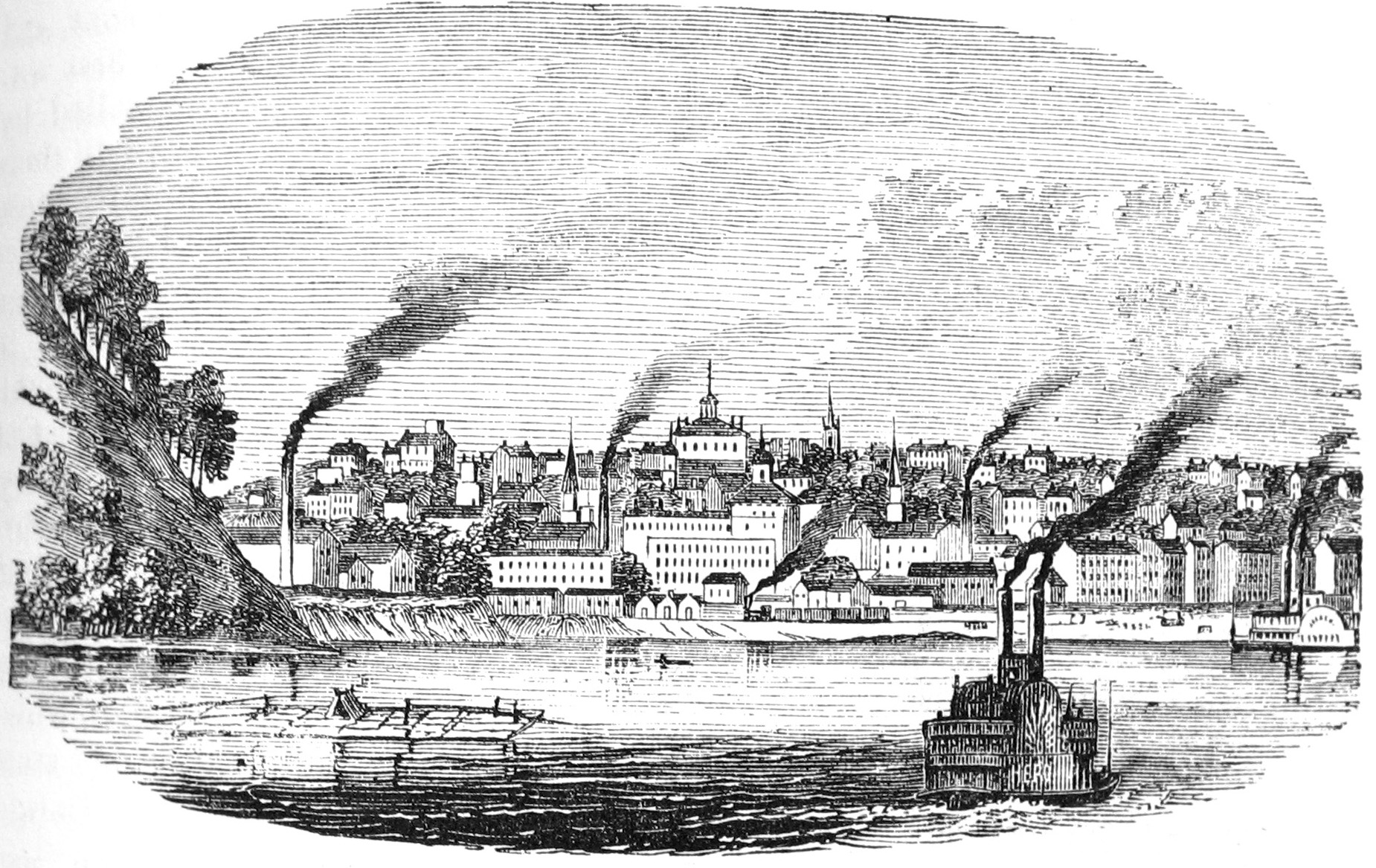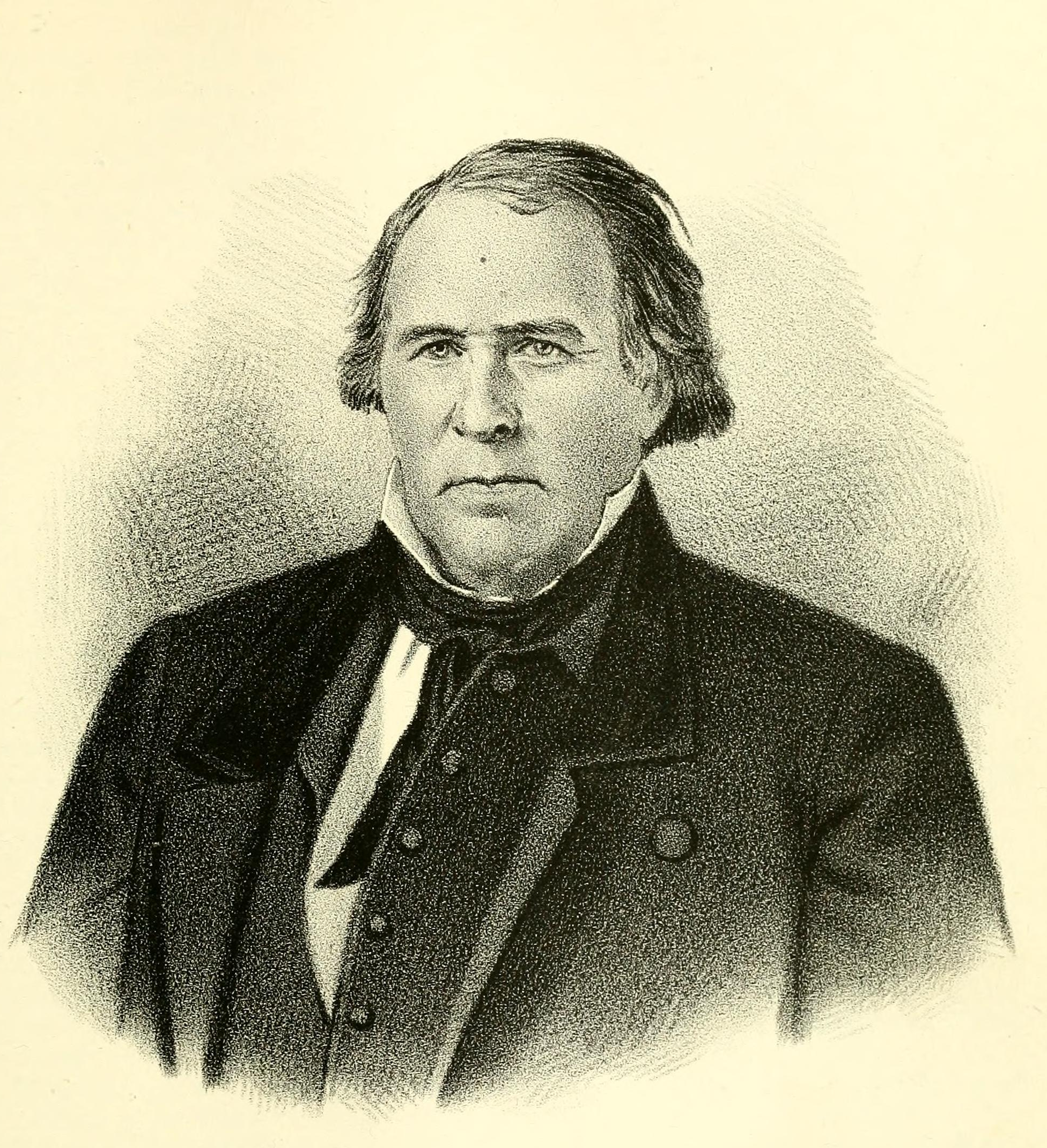|
Jeremiah Smith, Jr.
Jeremiah Smith Jr. (March 23, 1802 - February 28, 1862) was an early settler in what is now Burlington, Iowa but was then in the Iowa District of the Michigan Territory. He worked as a merchant and land speculator, and later became a farmer and grower of fruit trees. He served as a representative for Des Moines County (which then made up the southern portion of what would later become Iowa) in the Council (the upper house) of the 1st Wisconsin Territorial Assembly, since at that time Iowa was part of Wisconsin Territory, from October 25, 1836, to June 25, 1838. Background Born March 23, 1802, in Ohio, Smith came with his family to Illinois. He served in a mounted rifle brigade in 1832 during the Black Hawk War. It is unclear from the available sources whether the sobriquet "Major Smith" found in some Burlington-area historical documents refers to Jeremiah Smith Jr. or his father Jeremiah, Sr. In late 1832, while the area around Burlington was still technically the property of the l ... [...More Info...] [...Related Items...] OR: [Wikipedia] [Google] [Baidu] |
Burlington, Iowa
Burlington is a city in, and the county seat of, Des Moines County, Iowa, United States. The population was 23,982 in the 2020 census, a decline from the 26,839 population in 2000. Burlington is the center of a micropolitan area, which includes West Burlington and Middletown, Iowa, and Gulfport, Illinois. Burlington is the home of Snake Alley, the most crooked street. History Prior to European settlement, the area was neutral territory for the Sac and Fox Native American tribes, who called it Shoquoquon (''Shok-ko-kon''), meaning Flint Hills. In 1803, President Thomas Jefferson organized two parties of explorers to map the Louisiana Purchase. The Lewis and Clark Expedition followed the Missouri River, while Lt. Zebulon Pike followed the Mississippi River. In 1805, Pike landed at the bluffs below Burlington and raised the United States Flag for the first time on what would become Iowa soil and recommended construction of a fort. The recommendation went unheeded. The Am ... [...More Info...] [...Related Items...] OR: [Wikipedia] [Google] [Baidu] |
Pelts
Fur is a thick growth of hair that covers the skin of mammals. It consists of a combination of oily guard hair on top and thick underfur beneath. The guard hair keeps moisture from reaching the skin; the underfur acts as an insulating blanket that keeps the animal warm. The fur of mammals has many uses: protection, sensory purposes, waterproofing, and camouflaging, with the primary usage being thermoregulation. The types of hair include * ''definitive'', which may be shed after reaching a certain length; * ''vibrissae'', which are sensory hairs and are most commonly whiskers; * ''pelage'', which consists of guard hairs, under-fur, and awn hair; * '' spines'', which are a type of stiff guard hair used for defense in, for example, porcupines; * ''bristles'', which are long hairs usually used in visual signals, such as the mane of a lion; * ''velli'', often called "down fur", which insulates newborn mammals; and * ''wool'', which is long, soft, and often curly. Hair leng ... [...More Info...] [...Related Items...] OR: [Wikipedia] [Google] [Baidu] |
Iowa State Legislature
The Iowa General Assembly is the legislative branch of the state government of Iowa. Like the federal United States Congress, the General Assembly is a bicameral body, composed of the upper house Iowa Senate and the lower Iowa House of Representatives respectively. The Senate consists of four year terms and the House consists of two year terms. The General Assembly convenes within the Iowa State Capitol in Des Moines. Composition The Iowa General Assembly consists of 50 senators and 100 representatives. Each senator represents about 60,927 people and each representative about 30,464 people . The last redistricting was enacted on April 19, 2011 for the 2012 elections 85th General Assembly. The assembly convenes annually on the second Monday in January. Leaders in the Senate are President Jake Chapman (R), and President Pro Tempore Brad Zaun (R). Partisan Senate leadership includes Majority Leader Jack Whitver (R), and Minority Leader Zach Wahls (D). In the House, the Speak ... [...More Info...] [...Related Items...] OR: [Wikipedia] [Google] [Baidu] |
Iowa Territorial Legislature
The Territory of Iowa Legislative Assembly or Legislative Assembly of Iowa Territory was the legislature of Iowa Territory, which operated between the creation of the territory in 1838 and statehood in 1846. Like that of Wisconsin Territory (from which Iowa had been split when Wisconsin became a state), the Assembly consisted of an upper house, called the Council (although some historical compilations refer to it as the Senate), led by a President; and a lower house, the House of Representatives, led by a Speaker of the House. The Council had 13 members, the House had 26. The term of members of the Council was changed from four years in 1836 to two years in 1838, and the term of Representatives was changed from two years in 1836 to one year in 1838. The Assembly held eight regular sessions and two special sessions of varying lengths, the first beginning November 12, 1838 and the last ending January 19, 1846. Legislative Assemblies 1 through 3 convened in Burlington and 4 through 8 ... [...More Info...] [...Related Items...] OR: [Wikipedia] [Google] [Baidu] |
Iowa Territory
The Territory of Iowa was an organized incorporated territory of the United States that existed from July 4, 1838, until December 28, 1846, when the southeastern portion of the territory was admitted to the Union as the state of Iowa. The remainder of the territory would have no organized territorial government until the Minnesota Territory was organized on March 3, 1849. History Most of the area in the territory was originally part of the Louisiana Purchase and was a part of the Missouri Territory. When Missouri became a state in 1821, this area (along with the Dakotas) effectively became unorganized territory. The area was closed to white settlers until the 1830s, after the Black Hawk War ended. It was attached to the Michigan Territory on June 28, 1834. At an extra session of the Sixth Legislative Assembly of Michigan held in September, 1834, the Iowa District was divided into two counties by running a line due west from the lower end of Rock Island in the Mississippi Rive ... [...More Info...] [...Related Items...] OR: [Wikipedia] [Google] [Baidu] |
Black Hawk (Sauk Leader)
Black Hawk, born ''Ma-ka-tai-me-she-kia-kiak'' (Sauk: ''Mahkatêwe-meshi-kêhkêhkwa'') (1767 – October 3, 1838), was a Sauk leader and warrior who lived in what is now the Midwestern United States The Midwestern United States, also referred to as the Midwest or the American Midwest, is one of four census regions of the United States Census Bureau (also known as "Region 2"). It occupies the northern central part of the United States. I .... Although he had inherited an important historic sacred bundle from his father, he was not a hereditary civil chief. Black Hawk earned his status as a war chief or captain by his actions: leading raiding and war parties as a young man and then a band of Sauk warriors during the Black Hawk War of 1832. During the War of 1812, Black Hawk fought on the side of the United Kingdom of Great Britain and Ireland, British against the US in the hope of pushing white American settlers away from Sauk territory. Later, he led a band of Sauk and ... [...More Info...] [...Related Items...] OR: [Wikipedia] [Google] [Baidu] |
Sauk People
The Sauk or Sac are a group of Native Americans of the Eastern Woodlands culture group, who lived primarily in the region of what is now Green Bay, Wisconsin, when first encountered by the French in 1667. Their autonym is oθaakiiwaki, and their exonym is Ozaagii(-wag) in Ojibwe. The latter name was transliterated into French and English by colonists of those cultures. Today they have three federally recognized tribes, together with the Meskwaki (Fox), located in Iowa, Oklahoma and Kansas. History Early history The Sauk, an Algonquian languages people, are believed to have developed as a people along the St. Lawrence River, which is now northern New York. The precise time is unknown, but around the time of the year 1600, they were driven from the area of the St. Lawrence river. Some historians believe that the Sauk migrated to what is now eastern Michigan, where they settled around Saginaw Bay (Ojibwe: ''Zaagiinaad-wiikwed'' – "Of the Outlet Bay"). For many years, the ... [...More Info...] [...Related Items...] OR: [Wikipedia] [Google] [Baidu] |
Mississippi River
The Mississippi River is the second-longest river and chief river of the second-largest drainage system in North America, second only to the Hudson Bay drainage system. From its traditional source of Lake Itasca in northern Minnesota, it flows generally south for to the Mississippi River Delta in the Gulf of Mexico. With its many tributaries, the Mississippi's watershed drains all or parts of 32 U.S. states and two Canadian provinces between the Rocky and Appalachian mountains. The main stem is entirely within the United States; the total drainage basin is , of which only about one percent is in Canada. The Mississippi ranks as the thirteenth-largest river by discharge in the world. The river either borders or passes through the states of Minnesota, Wisconsin, Iowa, Illinois, Missouri, Kentucky, Tennessee, Arkansas, Mississippi, and Louisiana. Native Americans have lived along the Mississippi River and its tributaries for thousands of years. Most were hunter-ga ... [...More Info...] [...Related Items...] OR: [Wikipedia] [Google] [Baidu] |
Belmont, Wisconsin
Belmont is a village in Lafayette County, Wisconsin, Lafayette County, Wisconsin, United States. The population was 986 at the 2010 United States Census, 2010 census. History Founded in 1835 by land speculation, speculator John Atchison, Belmont was the original Capital (political), capital of the Wisconsin Territory, and the original territorial capitol building is preserved several miles northwest of the village at First Capitol Historic Site (Wisconsin), First Capitol Historic Site. The village is adjacent to the Belmont (town), Wisconsin, Town of Belmont. The name Belmont comes from the French for “beautiful mountain”, referencing three hills within the village. Geography According to the United States Census Bureau, the village has a total area of , all of it land. Belmont Mound State Park is located northwest of the village. Demographics 2010 census As of the census of 2010, there were 986 people, 439 households, and 279 families living in the village. The population ... [...More Info...] [...Related Items...] OR: [Wikipedia] [Google] [Baidu] |
Speaker Of The Wisconsin State Assembly
The Speaker of the Wisconsin State Assembly is the presiding officer of the Wisconsin State Assembly, the lower house of the Wisconsin Legislature. Article IV of the Constitution of Wisconsin, ratified in 1848, establishes the legislature and specifies the election of officers. The role and responsibilities of the speaker are defined in the Assembly Rules, originally in Rule 1, and also, under the present rules, Rule 3. Selection The speaker is chosen by a majority vote of the Assembly members at the start of each session or whenever a vacancy occurs in the role during a session, as such, the speaker is almost always the ''de facto'' leader of the Assembly's majority party. A speaker pro tempore is elected concurrent with the election of the speaker, to carry out the speaker's duties in his or her absence. Unlike the United States House of Representatives, the rules of the Assembly require that the speaker and speaker pro tempore be elected from among the members of the Assem ... [...More Info...] [...Related Items...] OR: [Wikipedia] [Google] [Baidu] |
Dubuque County, Iowa
Dubuque County is a county located in the U.S. state of Iowa. As of the 2020 census, the population was 99,266, making it the eighth-most populous county in Iowa. The county seat is Dubuque. The county is named for Julien Dubuque, the first European settler of Iowa. Dubuque County comprises the Dubuque, IA Metropolitan Statistical Area. History Early history Dubuque County is named for French trader Julien Dubuque, the first European settler of Iowa, and an early lead mining pioneer in what is now Dubuque County. Dubuque was French Canadian, and had (by most accounts) a friendly relationship with the local Fox tribe of Native Americans. He and other early pioneers established a lucrative mining and trading industry in the area. When lead deposits began becoming exhausted, the pioneers developed boat building, lumber yards, milling, brewing, and machinery manufacturing to take its place. The city of Dubuque was chartered in 1833 as the first city in Iowa. The establishment of ... [...More Info...] [...Related Items...] OR: [Wikipedia] [Google] [Baidu] |







